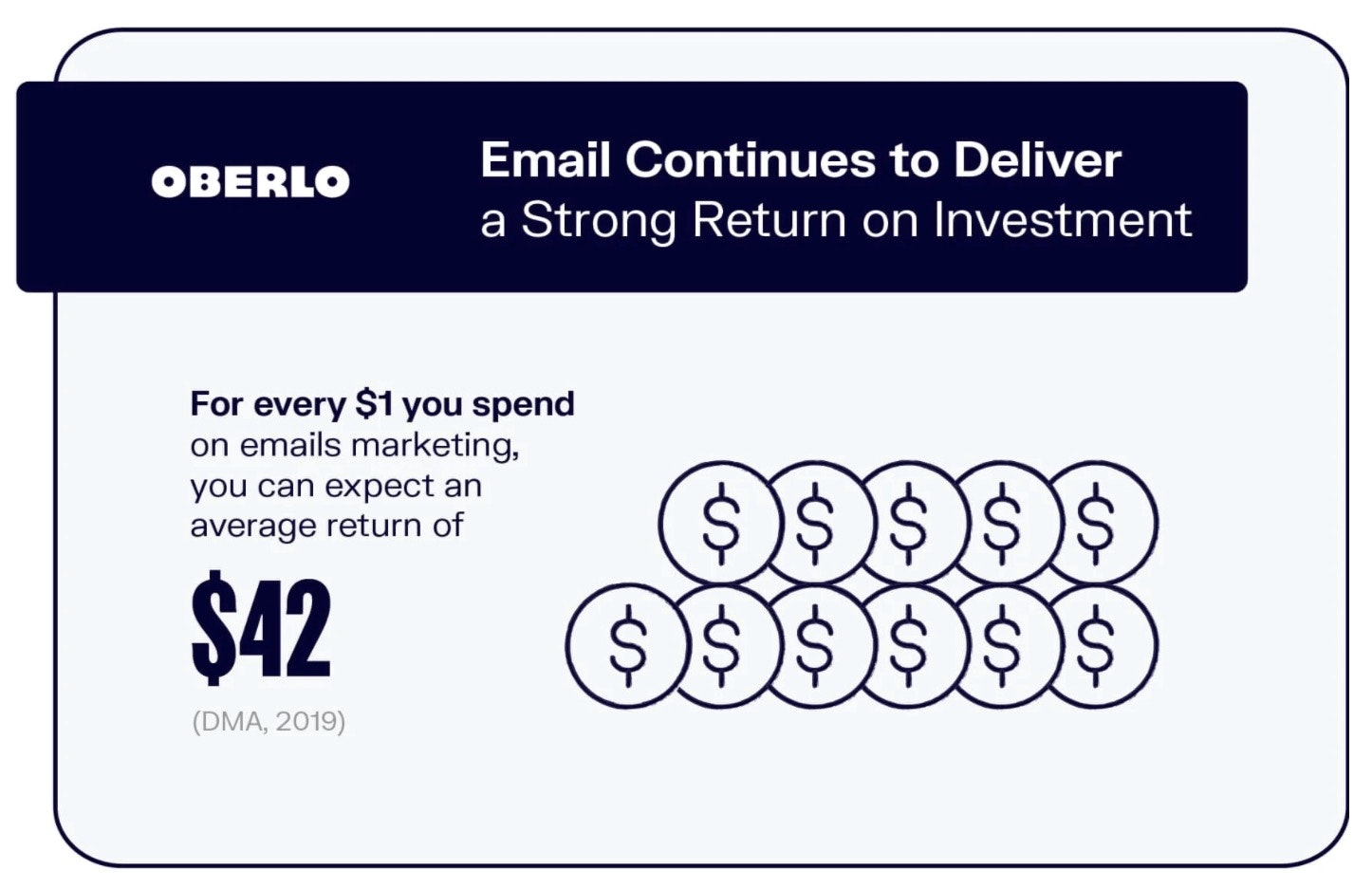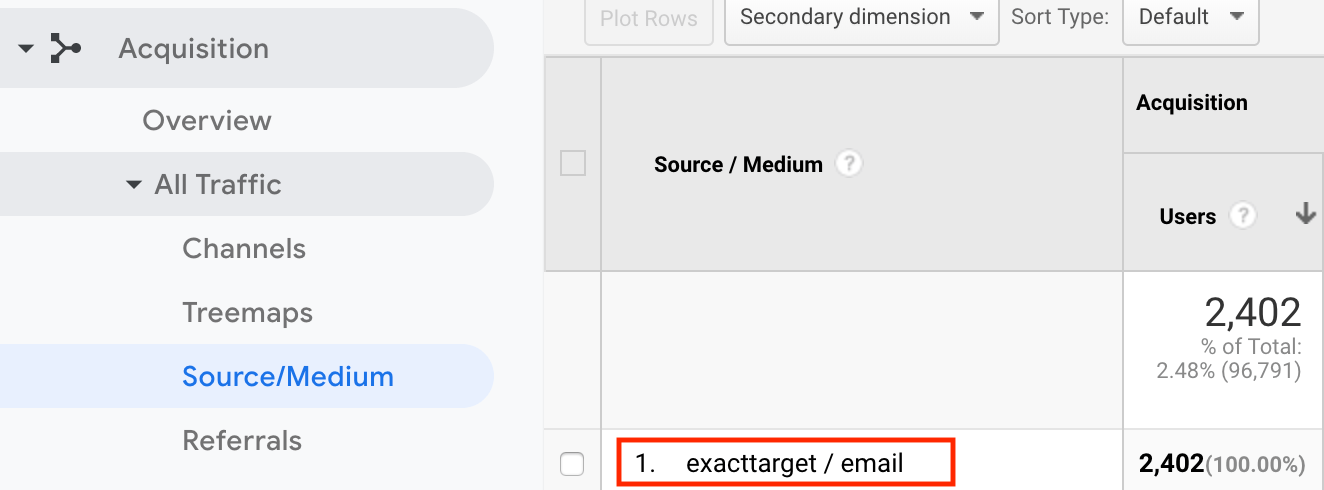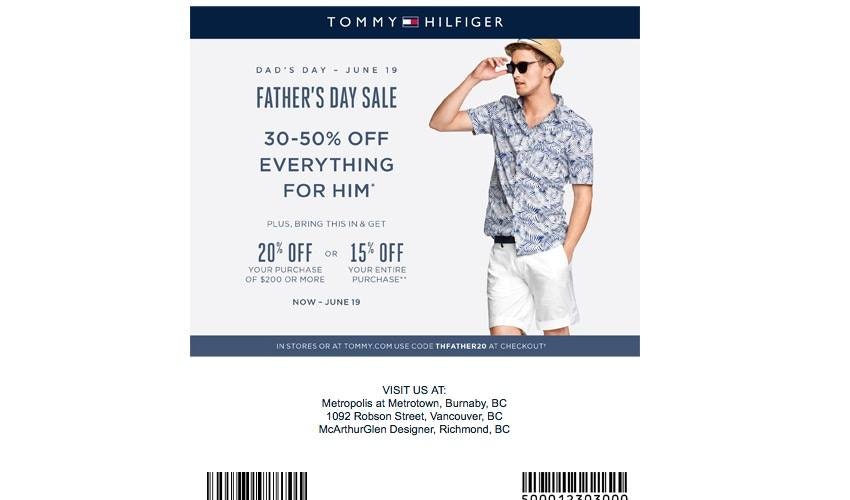Email marketing has ruled the roost since its inception, never faltering even when newer marketing formats became popular among ecommerce marketers. Because of this, email marketing has become a steady provider of conversions for many small, medium, and large businesses. Hell, there are even email marketing courses, webinars, and conferences across the world to help people with their CRO through email. If you are not partaking in this reliable digital marketing channel within your dropshipping marketing strategy you need to start today.
Post Contents



What is Email Marketing?
Email marketing is a marketing channel where companies send emails with commercial material to a list of people who have signed up to their email marketing campaign. The aim of email marketing is to lead people to a company’s website or to buy from a salesperson. Email marketing has evolved rapidly in recent years so that now we can personalize content within emails, and create highly segmented audiences.
Email marketing is still one of the most cost-effective and conversion-rich forms of digital marketing today. Sure, social media, SEO, and PPC have since come along and gotten marketers all excited, but don’t get fooled! Email marketing is potent, low budget, and gets your ecommerce dropshipping store great results.
→ Click Here to Launch Your Online Business with Shopify
How Does Email Marketing Work?
As a form of direct marketing, email marketing using electronic email as a form of communication between your company and your audience in order to improve your relationship over time. The aim of email marketing is to increase conversions on your website and to improve customer loyalty, both for new and returning customers.

Email marketing can have many processes but the most important first step is to grow a list of people who want to receive information about your company. This could be through implementing a subscribe box on your website or collecting emails throughout the sales process. For companies who sell to customers within the EU, there are certain regulations to adhere to before you can start sending emails to customers.
After you have collected a list of people to send emails to, you need to create a strategy for sharing information with these people. Whether you want to share a discount code, new products, or general information about your company, an email marketing strategy is needed to ensure that you do not send the same information to people twice.
When creating an email to send to your subscriber group, you should make sure to include a call to action (CTA) within the text, with the use of a button that stands out, and provide the ability to forward the email to a friend easily. Also, make sure to comply with GDPR rules if some of your subscribers are based in the European Union.
Why Email Marketing is Important?
Let’s look at some statistics which show the importance of email marketing. According to the Direct Marketing Association, you get $42 for every $1 that you spend on email marketing! That’s incredible. No other form of digital marketing has such high return on investment. So the next time you ask yourself, “What is email marketing?” remember that it’s an affordable way to advertise your small online store that gives you a really good ROI.

Email Marketing Metrics at a Glance
There are many different email marketing metrics that people use to report on the success of a campaign. These metrics are:
- Open Rate: The number of people who open your email compared to the total number of emails sent out.
- Click-Through-Rate (CTR): The number of people who clicked on something within your email compared to those who opened your email.
- Conversion Rate: The percentage of people who bought a product or service from you after clicking through from your email.
- Bounce Rate: The number of people who click out of your email without interacting anywhere inside.
- Subscribe Rate: The percentage increase/decrease of subscribers added to your email marketing list over a period of time
- Unsubscribe Rate: The percentage of subscribers who unsubscribe from a specific campaign or over a period of time.
What Is a Good Open Rate for Email Marketing
Depending on your industry a good open rate could be anywhere between 14 and 27%. If your open rate is lagging behind you can try to test new formats for your subject lines to entice more people to open your emails or make sure that your emails are not falling into subscribers spam folders. There are many ways to increase your open rate but the most important first step is to ask yourself if you are sending valuable information to subscribers. If the answer is no, you need to change up your strategy. If yes, you can start to look at the different elements of your email and change how you do things slowly to see what makes a difference to your open rate.
The Advantages of Email Marketing
Good ROI
As we have already discussed, email marketing has great ROI if done right. When you take the time to track the results of your email campaigns you can find out exactly what the ROI is on them and decide whether you need to improve this number or celebrate your big wins.
Ability to Track
Using free tools like Google Analytics you can track the people who click through to your website from your email campaigns. This can be done by creating tracked URLs, through the likes of Google URL Builder, or by using a third party email tool which will input special URLs so you don’t need to worry about creating your own.
When you send an email out, all the traffic to your website that comes from this email will register in Google Analytics as the source ‘Email’. From there you can track how many visitors convert or complete a goal if you have these set up in your Google Analytics account.

Ability to Automate
Email marketing software like Constant Contact or GetResponse give you the option to automate email campaigns so that you don’t need to push a button to have a campaign sent out. Instead, you can schedule an email to be sent at a certain time and it will be sent out regardless of if you are in front of your computer or not. The beauty of email service providers like these is that you can create campaign paths that new subscribers can go through that can be automated so that when a new subscriber is added to an email list they will receive emails without you needing to push send.
5 Tips for Better Email Marketing
1. Build Your Subscriber List
It is so important that you build a list of subscribers that will engage with your content. When you are not recruiting new subscribers your recipients will start to unsubscribe or stop engaging with your content and quickly your campaigns go from being successful to stale. Instead, add a subscriber box across your website, add a subscribe button during the order process, and ask your social media followers to sign up to your email marketing list. This way you will have a constant influx of subscribers to engage with.

2. Personalize Your Content
When sending an email campaign to any group, research has shown that personalizing the content to the customer increases conversions and helps to build trust with your audience. According to Epsilon 80% of consumers are more likely to buy from you when you provide a personalized experience to them. Personalization includes a wide range of options like add a subscriber’s name in the opening of the email, or tailoring the content in an email depending on your customer’s previous purchases.
3. Segment Your Audience
Segmenting your audience means that you place subscribers into carefully curated lists. These lists can be based on parameters like on demographics, psychographics, subscriber status, or products bought. When you do this with your email lists you can be sure that you are providing tailored content to your subscribers that will lead to better conversion rates. Campaign Monitor states that marketers who used segmented campaigns noted as much as a 760% increase in revenue. This is a huge tip to act on when your email list starts to build out.
4. Test and Optimize
With the ability to track campaign success it is so important to use this information to enhance future campaigns. For instance, if you find that your CTR is below the industry average, you could try A/B testing different subject lines to find the right format to increase CTR among your audience. Or you might find that subscribers are clicking through to your website but never buying from you so the content of your email might not be enticing enough for subscribers to want to purchase from you. For this, you could try including a discount code or limited time offer or testing out different CTAs to see if this will affect your conversion rate.

5. Create an Email Calendar
When your email subscriber list grows to the size where you cannot remember the whole list it is time to create an email calendar where you can plan the email campaigns to go out, highlighting who they should be sent to, and the content inside them. You can then create content ahead of time and schedule the emails so that you have more time to spend on optimizing your website and focus on increasing sales. What is more, you can set up trigger emails for people when they first sign up to your email list, or make a sale, so that they get emails from you even if you decide to take a few days off dropshipping. Neil Patel mentions that “trigger emails have a 152% higher open rate compared with traditional emails. They are a valuable communication tool and convert window shoppers into lifelong customers”. With this being the case, who would not want to set up trigger emails as part of their email marketing strategy.
Email Marketing in a Nutshell
So there you have it. Email marketing is a complex digital marketing channel with many areas to think about, from personalization to CTR, to trigger emails. But one thing is for sure, this content format has outperformed it’s digital marketing counterparts time and time again in terms of being a profit-generating channel. If you are looking to grow online sales and have a bit of time to invest in email marketing it will be time well spent according to our research.



Want to Learn More?
- Comparison of the Best Email Marketing Platforms for eCommerce
- 5 Free Marketing Channels You Should Prioritize
- The Value of Facebook Ads and Target Markets for Ecommerce
- 10 Email Marketing Stats You Need to Know [Infographic]
Is there anything else you’d like to know more about and wish was included in this article? Let us know in the comments below!


